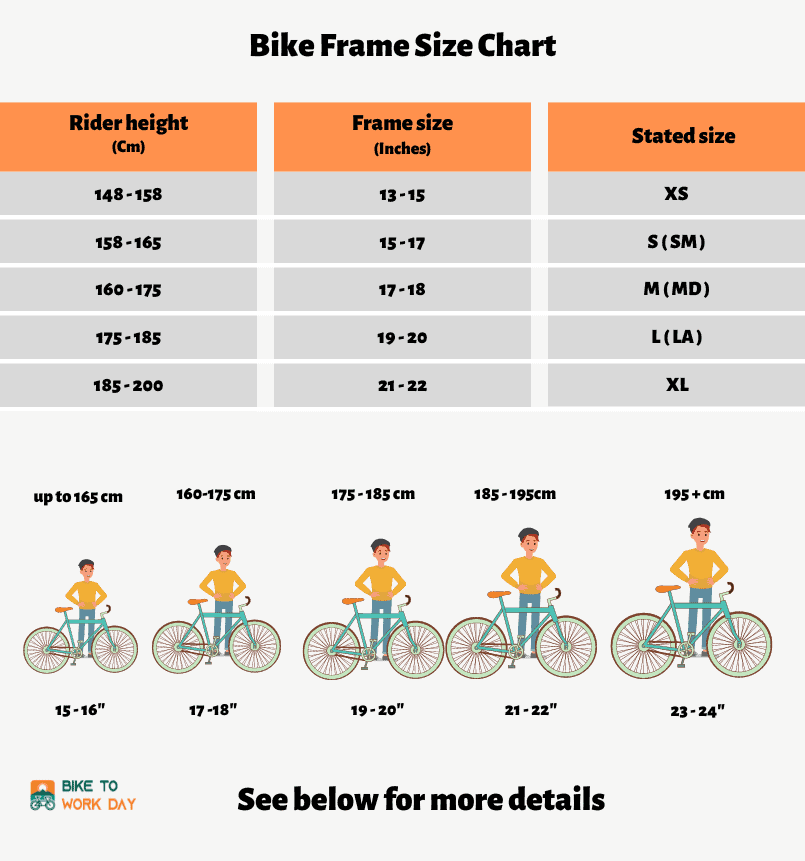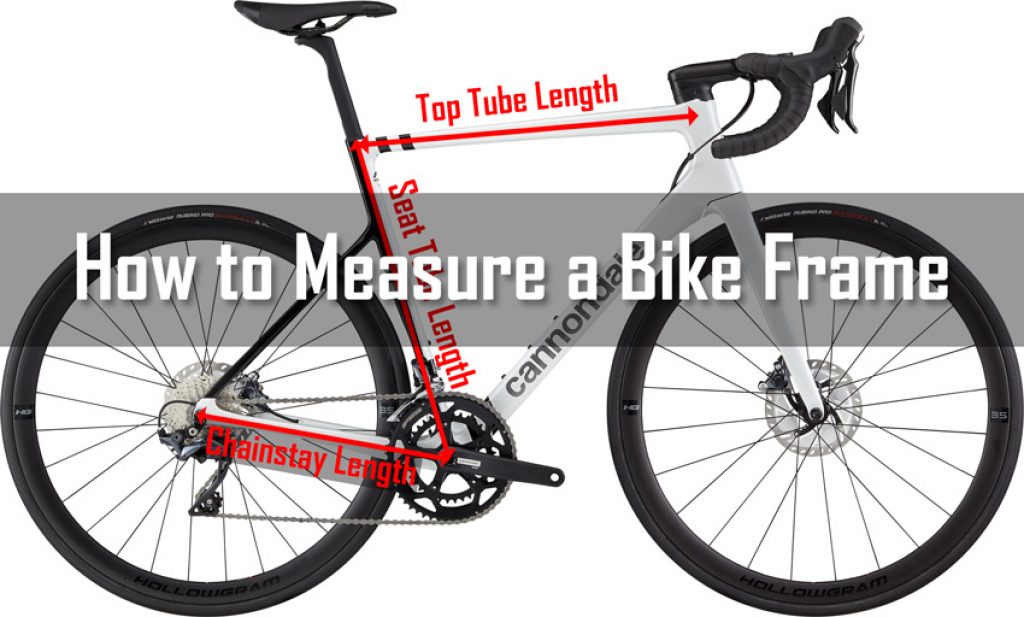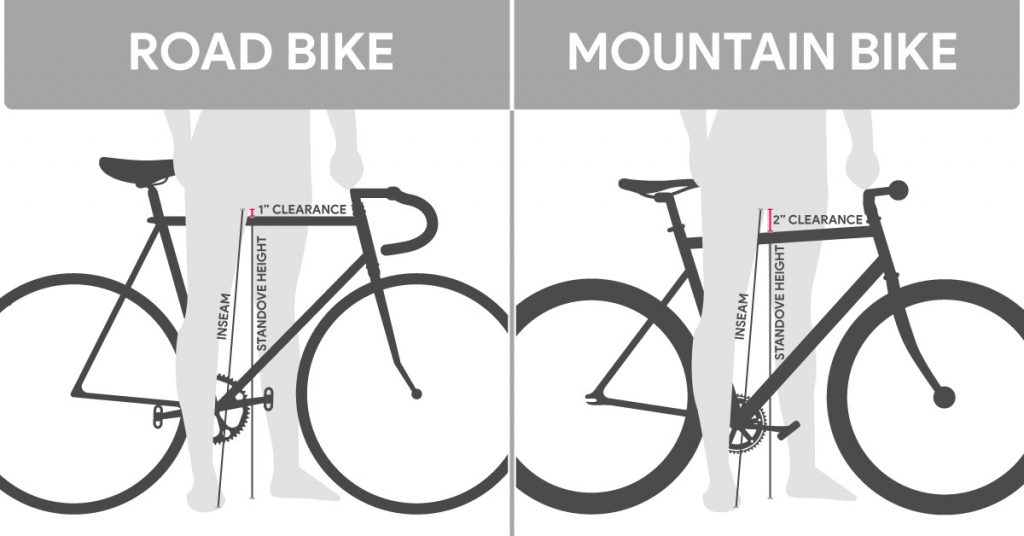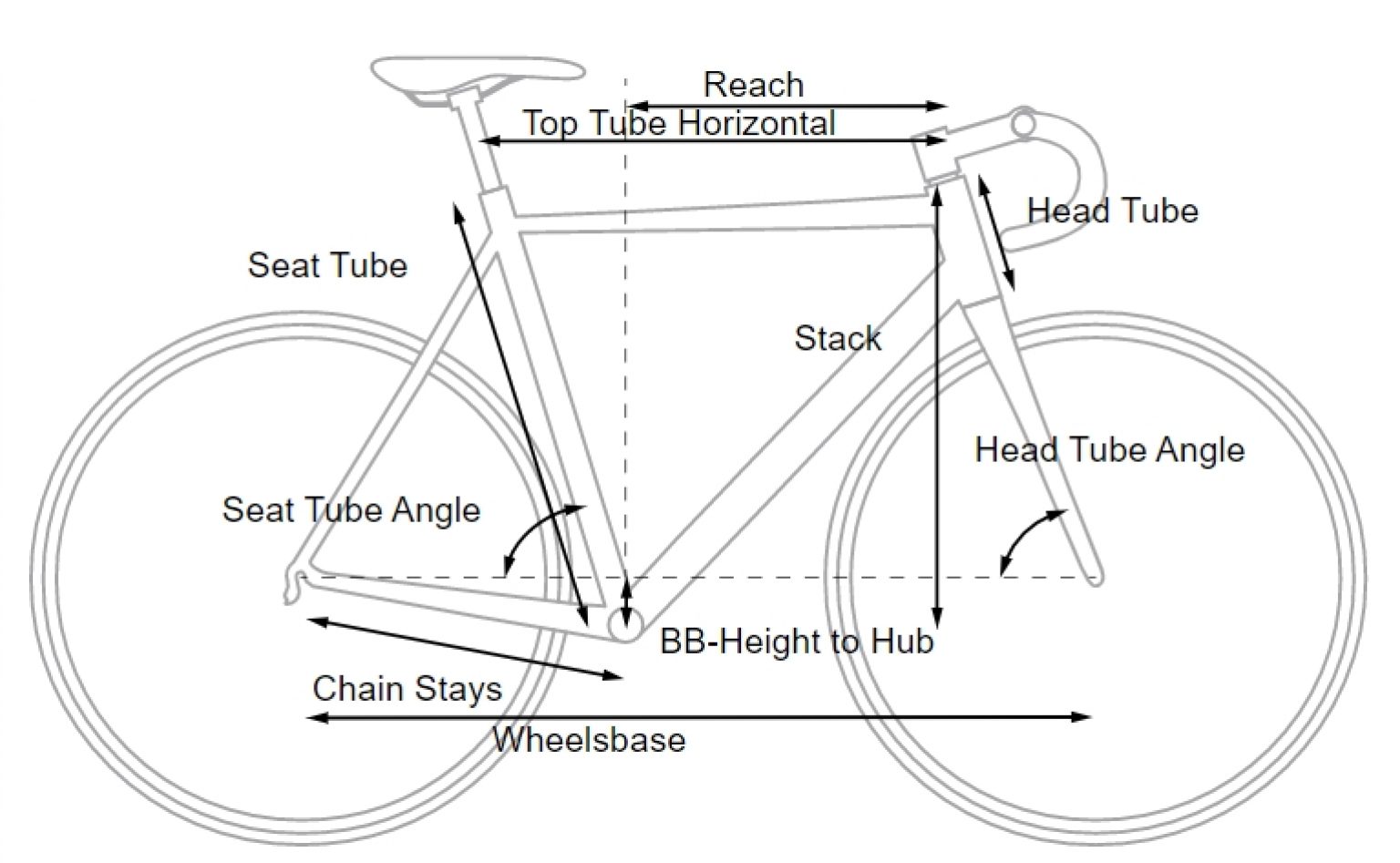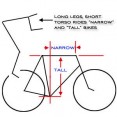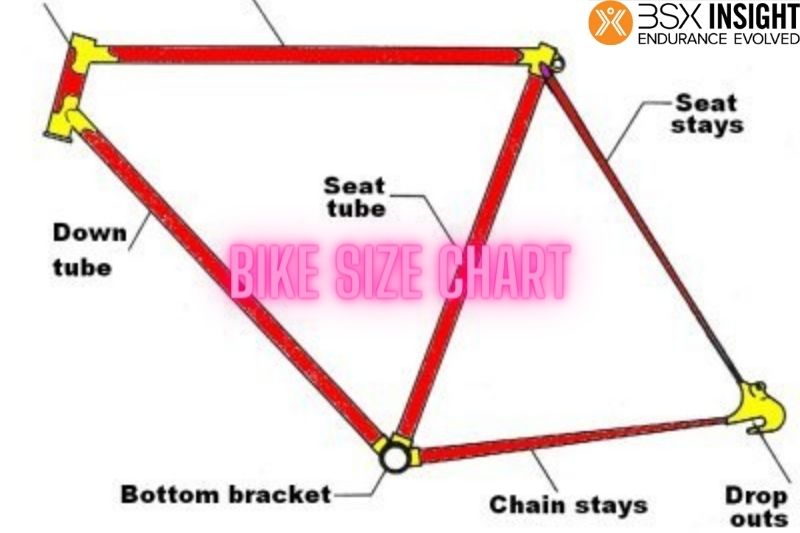Understanding Bike Frame Geometry: Key Components to Measure
When it comes to measuring a bicycle frame, there are several key components to consider. These components work together to determine the overall fit and performance of the bike. The seat tube, top tube, head tube, and wheelbase are the primary components that need to be measured to ensure a proper fit.
The seat tube is the vertical tube that runs from the bottom bracket to the seat post. It’s essential to measure the seat tube accurately, as it affects the rider’s position and comfort. A seat tube that’s too short or too long can lead to discomfort, pain, and decreased performance.
The top tube is the horizontal tube that runs from the head tube to the seat tube. It plays a crucial role in determining the bike’s fit and handling. A top tube that’s too short or too long can affect the rider’s position, balance, and control.
The head tube is the tube that connects the front fork to the frame. It’s responsible for holding the front wheel in place and affecting the bike’s handling and stability. Measuring the head tube accurately is crucial to ensure proper alignment and fit.
The wheelbase is the distance between the front and rear wheels. It affects the bike’s stability, handling, and overall performance. A wheelbase that’s too short or too long can lead to decreased stability and increased risk of accidents.
By understanding the key components of a bike frame and how they affect the overall fit and performance, riders can make informed decisions when measuring their bike frame. In the next section, we’ll provide a step-by-step guide on how to measure a bike frame accurately.
How to Measure Your Bike Frame: A Step-by-Step Guide
Measuring a bicycle frame requires attention to detail and the right tools. To ensure accurate measurement, follow these steps:
Step 1: Gather the necessary tools, including a tape measure, a level, and a pencil. Make sure the bike is clean and free of any accessories or components that may interfere with the measurement process.
Step 2: Measure the seat tube length by placing the tape measure along the centerline of the seat tube, from the bottom bracket to the top of the seat tube. Record the measurement in inches or centimeters.
Step 3: Measure the top tube length by placing the tape measure along the centerline of the top tube, from the head tube to the seat tube. Record the measurement in inches or centimeters.
Step 4: Measure the head tube length by placing the tape measure along the centerline of the head tube, from the top of the head tube to the bottom of the head tube. Record the measurement in inches or centimeters.
Step 5: Measure the wheelbase by placing the tape measure along the centerline of the bike, from the center of the front wheel to the center of the rear wheel. Record the measurement in inches or centimeters.
Step 6: Use a level to ensure the bike is properly aligned and the measurements are accurate. Double-check the measurements to ensure accuracy.
By following these steps and using the right tools, you can accurately measure your bike frame and ensure a proper fit. Remember to take your time and be patient, as accurate measurement is crucial for a comfortable and safe riding experience.
Common Mistakes to Avoid When Measuring Your Bike Frame
When measuring a bicycle frame, it’s easy to make mistakes that can affect the accuracy of the measurement. Here are some common mistakes to avoid:
Incorrect tool usage: Using the wrong tools or not using them correctly can lead to inaccurate measurements. Make sure to use a tape measure or a caliper that is specifically designed for measuring bike frames.
Misaligned measurements: Failing to align the measuring tool with the centerline of the bike frame can result in inaccurate measurements. Always make sure to align the tool with the centerline of the frame before taking a measurement.
Neglecting to consider other bike components: Failing to consider other bike components, such as the wheels, tires, and pedals, can affect the accuracy of the measurement. Make sure to take into account the size and type of these components when measuring the bike frame.
Not double-checking measurements: Failing to double-check measurements can lead to errors. Always double-check your measurements to ensure accuracy.
Not considering the type of bike: Different types of bikes, such as road, mountain, and hybrid bikes, have different measurement requirements. Make sure to consider the type of bike you are measuring and adjust your measurement technique accordingly.
By avoiding these common mistakes, you can ensure accurate measurements and a proper fit for your bike. Remember to take your time and be patient, as accurate measurement is crucial for a comfortable and safe riding experience.
Using Online Tools and Resources to Measure Your Bike Frame
Measuring a bicycle frame can be a daunting task, especially for those who are new to cycling. Fortunately, there are many online tools and resources available that can help make the process easier and more accurate.
Bike fit calculators are a great resource for measuring a bike frame. These calculators use a series of questions and measurements to determine the ideal bike size and fit for a rider. They can be found on many cycling websites and are often free to use.
Online measurement guides are another useful resource for measuring a bike frame. These guides provide step-by-step instructions and diagrams to help riders measure their bike frame accurately. They can be found on many cycling websites and are often accompanied by videos and tutorials.
Some popular online tools and resources for measuring a bike frame include BikeFit, FitKit, and Retül. These tools use a combination of measurements and algorithms to determine the ideal bike size and fit for a rider.
While online tools and resources can be very helpful, it’s essential to remember that they are not a substitute for professional advice. If you’re unsure about how to measure your bike frame or need help with the process, it’s always best to consult with a professional bike fitter or mechanic.
By using online tools and resources, riders can ensure accurate measurements and a proper fit for their bike. This can lead to improved comfort, performance, and safety, making the cycling experience more enjoyable and rewarding.
Measuring for Different Types of Bikes: Road, Mountain, and Hybrid
When it comes to measuring a bicycle frame, different types of bikes require different measurement techniques. Road bikes, mountain bikes, and hybrid bikes each have unique characteristics that affect the measurement process.
Road bikes are designed for speed and efficiency on paved roads. When measuring a road bike frame, it’s essential to consider the rider’s position and the bike’s geometry. Road bikes typically have a more aggressive riding position, with a lower handlebar height and a longer top tube. This requires a more precise measurement of the seat tube and top tube to ensure a comfortable and efficient riding position.
Mountain bikes, on the other hand, are designed for off-road riding and require a more relaxed riding position. When measuring a mountain bike frame, it’s essential to consider the rider’s position and the bike’s suspension. Mountain bikes typically have a more upright riding position, with a higher handlebar height and a shorter top tube. This requires a more precise measurement of the seat tube and head tube to ensure a comfortable and stable riding position.
Hybrid bikes are a combination of road and mountain bikes, designed for riding on both paved and unpaved surfaces. When measuring a hybrid bike frame, it’s essential to consider the rider’s position and the bike’s geometry. Hybrid bikes typically have a more upright riding position, with a higher handlebar height and a shorter top tube. This requires a more precise measurement of the seat tube and head tube to ensure a comfortable and stable riding position.
Regardless of the type of bike, accurate measurement is crucial to ensure a comfortable and safe riding experience. By considering the unique characteristics of each type of bike, riders can ensure a precise measurement and a perfect fit.
Tips for Measuring a Bike Frame for a Perfect Fit
Measuring a bicycle frame requires attention to detail and a thorough understanding of the bike’s geometry. To achieve a perfect fit, consider the following tips:
Consider your personal preferences: Think about your riding style, body type, and personal preferences when measuring your bike frame. Do you prefer a more upright or aggressive riding position? Do you have any physical limitations or discomforts that need to be considered?
Take into account your riding style: Different riding styles require different bike fits. For example, if you’re a road cyclist, you may prefer a more aggressive riding position with a lower handlebar height and a longer top tube. If you’re a mountain biker, you may prefer a more upright riding position with a higher handlebar height and a shorter top tube.
Consider your body type: Your body type can affect the way you fit on a bike. For example, if you have a longer torso, you may need a longer top tube to achieve a comfortable riding position. If you have shorter legs, you may need a shorter seat tube to avoid discomfort.
Be patient and take your time: Measuring a bike frame requires patience and attention to detail. Take your time to ensure accurate measurements and don’t rush the process.
Use a combination of measurement techniques: Use a combination of measurement techniques, such as using a tape measure, a caliper, and a level, to ensure accurate measurements.
Double-check your measurements: Double-check your measurements to ensure accuracy and avoid mistakes.
By following these tips, you can ensure a perfect fit for your bike and enjoy a comfortable, safe, and enjoyable riding experience.
Conclusion: The Importance of Accurate Bike Frame Measurement
Measuring a bicycle frame accurately is crucial for ensuring a comfortable, safe, and enjoyable riding experience. By understanding the importance of accurate bike frame measurement and following the tips and guidelines outlined in this article, riders can ensure a perfect fit for their bike.
Accurate bike frame measurement is not just about ensuring a comfortable ride; it’s also about safety. A bike that is too small or too large can be difficult to control, increasing the risk of accidents and injuries.
In addition to safety, accurate bike frame measurement can also improve performance. A bike that is properly fitted to the rider can improve efficiency, reduce fatigue, and enhance overall performance.
By taking the time to measure a bicycle frame accurately, riders can enjoy a more comfortable, safe, and enjoyable riding experience. Whether you’re a seasoned cyclist or just starting out, accurate bike frame measurement is essential for getting the most out of your bike.
In conclusion, measuring a bicycle frame accurately is a crucial step in ensuring a comfortable, safe, and enjoyable riding experience. By following the tips and guidelines outlined in this article, riders can ensure a perfect fit for their bike and enjoy the many benefits of cycling.
Conclusion: The Importance of Accurate Bike Frame Measurement
In conclusion, measuring a bicycle frame accurately is crucial for ensuring a comfortable, safe, and enjoyable riding experience. By understanding the importance of accurate bike frame measurement and following the tips and guidelines outlined in this article, riders can ensure a perfect fit for their bike.
Accurate bike frame measurement is not just about ensuring a comfortable ride; it’s also about safety. A bike that is too small or too large can be difficult to control, increasing the risk of accidents and injuries.
In addition to safety, accurate bike frame measurement can also improve performance. A bike that is properly fitted to the rider can improve efficiency, reduce fatigue, and enhance overall performance.
By taking the time to measure a bicycle frame accurately, riders can enjoy a more comfortable, safe, and enjoyable riding experience. Whether you’re a seasoned cyclist or just starting out, accurate bike frame measurement is essential for getting the most out of your bike.
Remember, measuring a bicycle frame is a process that requires patience and attention to detail. By following the tips and guidelines outlined in this article, you can ensure a perfect fit for your bike and enjoy the many benefits of cycling.


